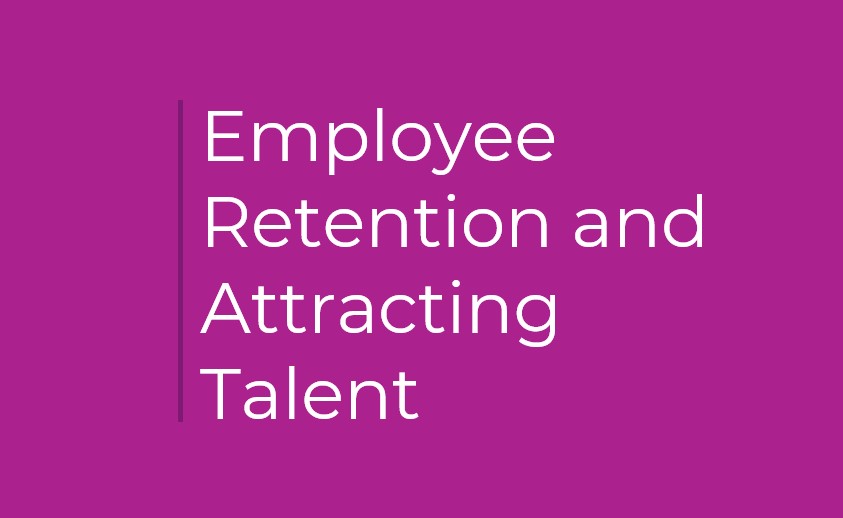Insights
What do employees want from their future employment?
The past two years have prompted businesses to completely rethink about how they operate and has also increased the use of digital technology across all business sectors. Digital transformation has made it so that businesses now have to think about how they will attract, retain and manage their workforce. A study conducted by the Harvard Business Review has identified three priorities that identify what talent management might look like in the future.
1. Employees expect flexible options
The study found that 86% of workers said that when they search for a new job, they look for one that offers flexibility within their working hours and location and 76% of these workers also said they would be more likely to prioritise their lifestyle and family interests over their proximity to work even if it means taking a pay cut.
2. Employees want to re-imagine how their productivity is measured
With the flexibility already accounted for, employees in this study also said they want to be measured on the value of the work they deliver not the volume. They want to be trusted to work wherever and still be able to complete high quality work.
3. Employees want to work within a diverse team
Lastly, these same employees said they would want to work for a company that prioritises diversity as this is more important to them than skills or company requirements that will change over time.
McCann Synergy also conducted a study across a range of industries within the UK and gathered data from 3,000 people on what they expect from their employers now and in the future. The study also looked at the top ten reasons that they may leave their job. What they found can be broken down into six different business aspects.
1. The happiness factor
As humans, we’re pretty good at change. In order to keep employees happy, bring them along on the transformation journey. Keep them updated on business changes and focus on what really matters to them. Listen to their ideas and demonstrate that you trust them to do a great job. By incorporating all these ideas into your day to day functions, you’ll make your work environment a happy place to be.
2. Is it time to ditch the 9 to 5?
If the pandemic has taught us anything, it’s that we can work flexibly, remotely and still do a great job at servicing our customers and meeting business targets. So, trust your employees and allow them to work remotely if that is what suits their lifestyle. If you do have remote workers, you should remember to keep them included in communications and activities to keep them engaged with the business and their fellow colleagues.
3. Have strong leaders
As simple as it sounds, treat your line managers as leaders and ensure they have been given the appropriate training to conduct their role. Not all your managers will be natural leaders or communications so make sure you are supporting them to support their teams. At the end of the day, people don’t leave jobs, they leave poor managers.
4. Empowered workforces
57% of the women in the study felt valued by their organisation compared to 62% of the male respondents. If you gather regular insights from your employees, you can make sure that you are listing to your employees and ensure that they feel that their opinion is valued. Listening to your employees’ ideas can empower them which can lead to business changes being successful.
5. The role of culture
People want to work for businesses that have strong values and that act on them. When having changes in the business it is vital to think of the people within the business as by encouraging your workforce to live and breathe the values, you can build a culture of open communication and make the process of change easier for everyone.
6. Incentives
It is already well known that incentives can make your employees more engaged and more productive but one thing to consider is that incentives don’t have to be big gestures such as cash bonuses or providing a company car. Incentives can cover a range of things from flexible working to allowing employees to take their birthday off. So, it is time to reconsider your incentives or introduce some new incentives that can motivate your employees?
We can see that these match with the Harvard Business Review study findings which helps us identify the five crucial themes for the future of work: wellbeing, leadership, recognition, employee experience, and workplace environment.
A positive employee experience can be achieved by creative thinking, strategic planning and consistent communication. Communication can be impacted through leaders that are compassionate, strong and make all your employees feel heard. Leaders should also be able to celebrate the wins and recognise employee growth (even small growth) as this will make your employees feel supported and valued.
This will redefine your employee experience and make your workplace an environment where everyone can thrive. It is also important that you constantly assess your business objectives and strategies as some methods that worked when your employees started working with you, may not work for them now. If this is the case, allow the opportunity for more creativity and introduce flexible office arrangements, flexible hours and collaborative spaces if this is what your employees think will benefit them.
So, what should businesses take away from this?
You should look at the broader picture. Listening to your employees matters more than ever before and communicating any changes to your values or ways of working will be the key to success of business in the future.
Employees expect their own needs to be considered and appreciate when businesses live by their values. Providing your employees with managers that will support them is crucial to building employee confidence and motivation and will help drive productivity.
Recruiting from more areas and expanding your reach to attract potential employees could also boost your creativity and productivity. You can even consider talent pools that are often forgotten about such as parents who’ve put their careers on hold to care for their family or bring back retirees that may want a few hours of work each week. The flexibility you get from a digital workforce and remote working means you could recruit talent from across the globe.
Finally, you should consider prioritising your learning and development opportunities. Changes to customer preferences and the new way of working has given opportunities for new roles and for your existing employees’ skills to grow. By prioritising the learning and development opportunities you offer, you will attract new talent and retain your existing talent and this will put your business in a stronger position to move forward.
Develop the talent you already have as you may not be able to hire all the new skills you need due to a scarce supply of skilled workers. Developing talent is not also more financially viable but is good for morale and provides attractiveness to potential new recruits. An alternative way you could do this is by gaining a deep understanding of how each of your employees works and have each team take part in redesigning their role and the way they work.
You may even need to test, trial and adapt to new ways of working before finding what works best for your business and its employees. If you take the employees on the journey with you and communicate your ideas and changes, it will show them that you are working towards a better future and will encourage them to remain employed by you.
5 Top Tips for attracting talent
1. Expand your reach when recruiting – look outside your usual talent pools and advertise in more than one or two recruitment channels.
2. Have a strong, diverse workplace culture – if you can demonstrate that you have a strong, diverse and open workplace culture (and have positive employee feedback) you will attract more candidates as it will show your willingness to be inclusive and want the best for all your employees.
3. Be open to the idea of being flexible – you will attract more candidates if you are open to the idea of allowing them to work flexibly around their lifestyle. The 9 to 5 working day doesn’t suit all candidates’ lifestyles and may deter potential candidates from applying if the advert states it’s a 9 to 5 job.
4. Allow the employee to be analysed on the quality of their work rather than only the quantity of work that is completed and provide opportunities for growth and development. Employees want to be able to enrich their skills and be given opportunities to develop both within the business and within themselves.
5. Listen to your employees and allow them to contribute ideas that could change the way you work. Employees want to feel appreciated and valued and by giving them opportunities to share their thoughts and then adapting to some of their ideas, you are showing them that you support them.






